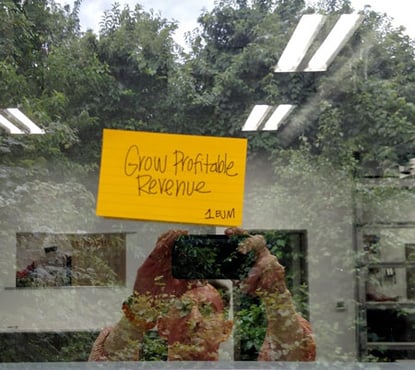We met with a nonprofit client’s team earlier this week. Their objective is mentoring other nonprofit organizations in developing stronger community programs within an area where our client has extensive experience.
One early step? Reaching out to the organizations’ directors to understand where they are starting from and the challenges they anticipate. Our client will then host a small gathering of executive directors two months from now to help guide their strategic efforts over the next two years.
Within an hour, based on our conversation, we recommended ideas for:
- Structuring the meeting agenda.
- Linking our client’s expertise (plus Brainzooming exercises) to address three challenges the organizations realize and one that they don’t yet see.
- Grouping the ten participants into sub-cohorts facing similar challenges so they can network and bond more closely.
- Having participants prepare mini-presentations to talk about areas where they are already pursuing intriguing and successful strategies.
- Identifying a meeting flow to begin and end with high-impact moments.
Afterward, the client expressed amazement at how much progress we’d made by collaboratively thinking through the possibilities in a very short time. They wondered aloud about how we achieved that.
My quick answer was, “Duh, it’s Brains Zooming. Brainzooming. That’s the brand promise!”
A Simple, Four-Step Formula to Get Brains Zooming

Stepping back though, our collective success involved using a fundamental formula. We employ it all the time to help people and organizations, whether it’s through strategy planning, innovation, branding, or leadership development.
Here are the four simple steps:
- Start with the principle of first building experiences for the audience members, then aligning audience interests and the organizer’s objectives.
- Share what everyone knows about the audience’s aspirations, wants, needs, and concerns (and learn more if the understanding is scant).
- Group what you’ve learned about the audience into major themes.
- Using the themes, identify what you can best deliver to make the audience as successful as possible in what lies ahead for them.
The formula is simple, yet it yields tremendous benefits for clarifying complex issues so that it’s easier to develop a path to move ahead. At its core, the formula employs structure to make audience members successful at something you already know how to do.
The Formula for Making Strategy Simple
We used this formula to develop the new Brainzooming eCourse, Strategy for Success: Strategic Planning Made Simple. There are multiple versions of the eCourse to match your specific strategy role.
Whether you are on the hook to develop a successful strategy for a business unit, product line, or event, there are eleven modules that quickly lead you through:
- Rethinking how to develop strategy
- Better aligning your direction to the organization and your audiences
- Thinking innovatively about your approach
- Rapidly developing an actionable plan
If you are responsible for helping others develop strategy, there are an additional eleven modules to guide you in:
- Streamlining strategy
- Energizing the organization to imagine bold possibilities
- Paving the way for successful alignment and implementation
The eCourse is exciting because it’s the first time we’ve shared many of these approaches beyond our own team and in-person client workshops. We used the simple formula above to ensure you’ll learn and be ready to apply these Brainzooming techniques immediately as you develop and implement strategy throughout the year. We invite you to enroll in the eCourse today and put it to use right away! – Mike Brown




